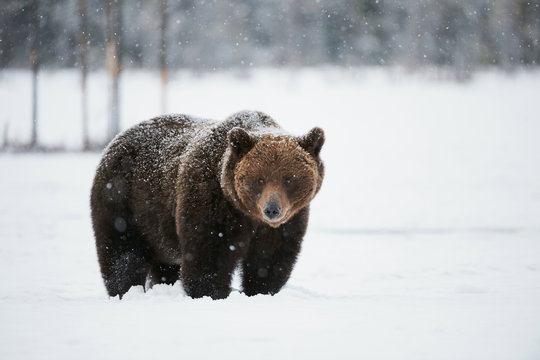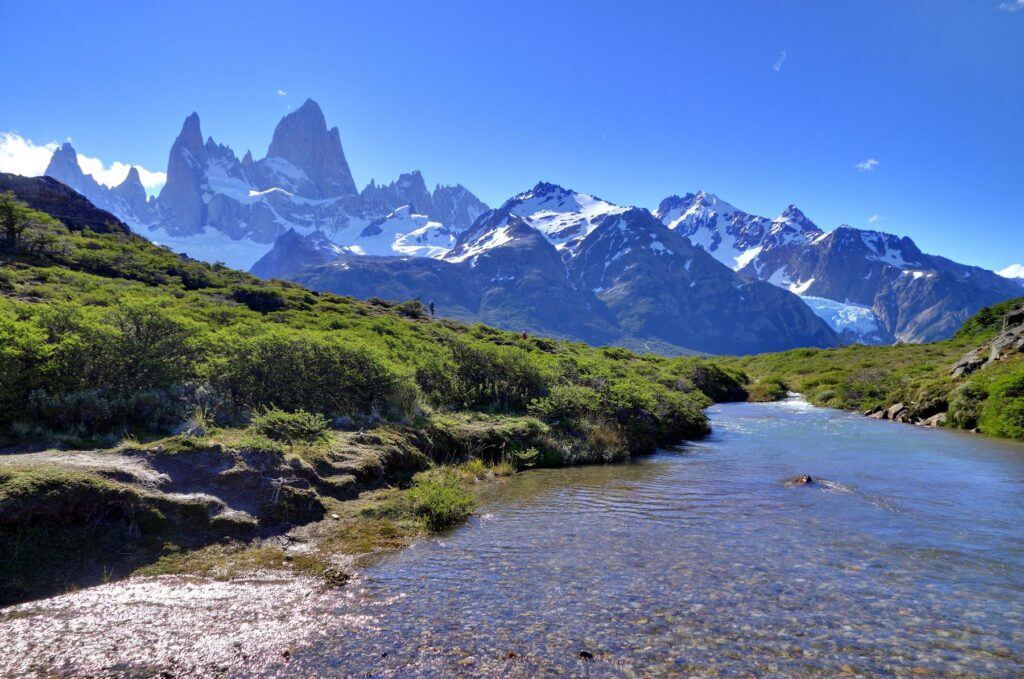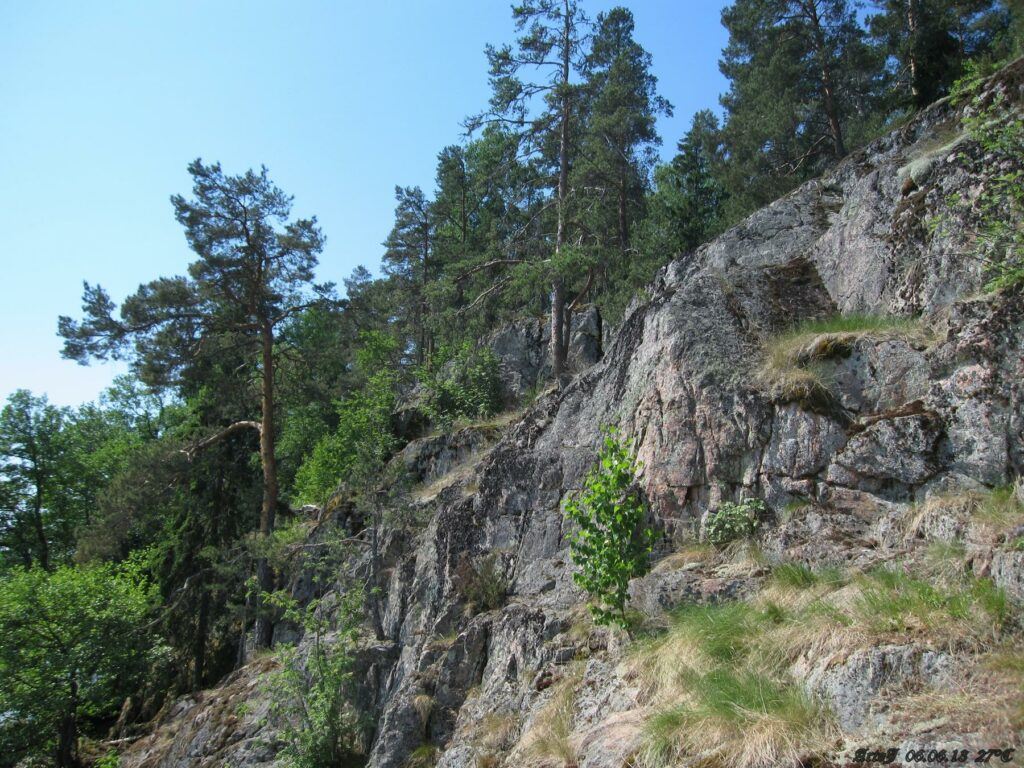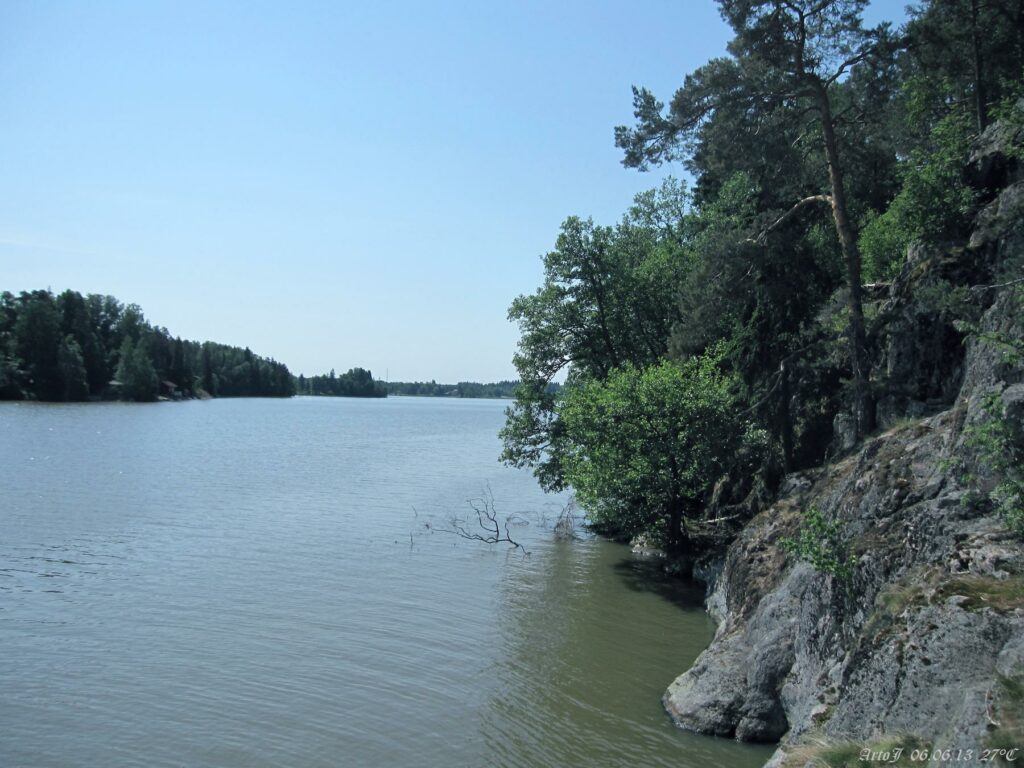National park travel is a popular and rewarding way to explore the great outdoors while experiencing the beauty and majesty of America’s national parks. Whether you are looking for adventure, relaxation, or a chance to connect with nature, there is something for everyone in national park travel. In this ultimate guide to national park travel and hiking trails, we’ll explore the best national parks in North America, offer tips on planning your national park vacation, provide advice on camping and hiking in national parks, and share insights on wildlife watching and photography in national parks. Join us on this journey to discover the wonders of national park travel!

National Parks in North America
If you are planning to visit North America, you should not miss exploring the breathtaking national parks in this region. Here are some of the most popular ones:
Grand Canyon National Park
Located in Arizona, the Grand Canyon National Park is one of the most visited national parks in the United States. The park is home to the Grand Canyon, one of the most famous natural wonders of the world that offers awe-inspiring views of the steep-sided canyon that was carved by the Colorado River. The park offers a variety of activities such as hiking, rafting, and camping. Visitors can also take a scenic drive along the South Rim of the canyon, which offers stunning views of the surrounding landscape.
Yellowstone National Park
Yellowstone National Park, located primarily in Wyoming, is famous for its geothermal features such as geysers, hot springs, and mud pots. The park is also home to a diverse range of wildlife such as bison, elk, and wolves. Visitors can enjoy activities such as hiking, camping, and wildlife watching, as well as take guided tours to explore the park.
Yosemite National Park
Yosemite National Park, located in California, is home to some of the most iconic natural landmarks in the world. The park is famous for its granite cliffs, waterfalls, and giant sequoia trees. Visitors can enjoy activities such as hiking, camping, and rock climbing. The park also offers breathtaking scenic drives that provide visitors with a panoramic view of the park’s beauty.
Acadia National Park
Acadia National Park, located in Maine, is known for its rugged coastline, rocky beaches, and forests. The park is home to a variety of wildlife such as moose, black bears, and bald eagles, as well as a wide range of plant species. Visitors can enjoy activities such as hiking, camping, and wildlife watching, as well as take scenic drives along Park Loop Road.
Great Smoky Mountains National Park
Great Smoky Mountains National Park, located in Tennessee and North Carolina, is the most visited national park in the United States. The park is famous for its stunning views, diverse wildlife, and historic cabins. Visitors can enjoy activities such as hiking, camping, and wildlife watching, as well as scenic drives that offer breathtaking views of the park’s beauty. The park also offers ranger-led programs and guided tours for visitors who want to learn more about the park’s history and biodiversity.
National Park Vacation Planning
Planning a national park vacation can be a thrilling experience, but it can be challenging to know where to start. Here are some tips to help you plan your next national park vacation.
Best time to visit national parks
The perfect time to visit a national park depends on the activities you want to do and the weather you prefer. For instance, if you are interested in hiking, the ideal time to visit would be during the spring or fall when the weather is mild. If you want to witness the fall foliage, the best time to visit would be in October.
How to get to national parks
Most national parks are situated in remote areas, so it is essential to plan how to get there. Some national parks have airports nearby, while others require a long drive. It is important to research transportation options and plan accordingly.
Accommodations in national parks
National parks offer various accommodations ranging from camping to lodges. Camping is a great way to immerse yourself into nature, while lodges offer more luxurious accommodations. It is recommended to book your accommodations in advance as they tend to fill up quickly.
National park tours
National park tours are an excellent way to explore the highlights of a park without having to plan everything yourself. Tours can range from a few hours to a few days and can include activities such as hiking, wildlife watching, and sightseeing. It is essential to research the available tours and book them in advance to avoid missed opportunities.
National Park Camping
Camping in a national park is a great way to experience the outdoors and get closer to nature. Follow these tips to make your camping trip in a national park unforgettable.
Camping Gear Essentials
When camping in a national park, it’s important to have the right gear to make your trip comfortable and safe. Some camping gear essentials include:
- Tent: Choose a tent that is appropriate for the number of people in your group and the weather conditions in the park.
- Sleeping Bag: Select a sleeping bag that is appropriate for the temperature range of the park and your personal comfort level.
- Camping Stove: Bring a camping stove to cook meals and boil water. Make sure to follow all safety guidelines and regulations.
- Water Filter: Bring a water filter to ensure that you have access to clean drinking water.
Make a camping checklist to ensure that you have everything you need for a successful trip.
National Park Camping Regulations
Each national park has its own camping regulations, so it’s important to research them before you go. Some parks require reservations, while others allow first-come, first-serve camping. Check the park’s website or contact them directly to learn about their specific camping regulations.
Choosing a Campsite in National Parks
Choosing a campsite in a national park can be overwhelming, as there are often many options available. Consider the following factors when choosing a campsite:
- Proximity to Water: Choose a campsite that is close to a water source, such as a river or lake, for easy access to water.
- Shade: Look for a campsite that has natural shade, such as trees, to keep you cool during hot weather.
- Wildlife Activity: Avoid campsites that are near areas with high wildlife activity, such as food sources or animal habitats.
Camping Safety Tips
Camping in a national park can be a safe and enjoyable experience if proper safety precautions are taken. Follow these camping safety tips:
- Store Food Properly: Keep your food stored in bear-proof containers or hang it from a tree to prevent animals from getting into it.
- Keep a Clean Campsite: Keep your campsite clean and free of food scraps and trash to avoid attracting wildlife.
- Stay a Safe Distance from Wildlife: Never approach or feed wildlife, and keep a safe distance at all times.
By following these tips, you can have a safe and memorable camping experience in a national park.

National Park Hiking
Hiking is one of the most popular activities in national parks, as it allows visitors to get exercise and explore the natural beauty of the park. To make the most of your hiking trip, here are some tips to keep in mind.
Hiking Gear Essentials
Before hitting the trails, make sure to pack the essential hiking gear. This includes:
- Hiking boots: Invest in a sturdy and comfortable pair of hiking boots that provide good ankle support.
- Backpack: Choose a backpack that is lightweight, durable, and has enough storage space for your essentials.
- Map: Bring a map or download one on your phone to avoid getting lost.
- Clothing: Wear appropriate clothing for the weather and terrain, and consider layers for changing temperatures.
- Water and snacks: Bring plenty of water and snacks to keep you hydrated and energized during the hike.
Best National Park Hikes
Each national park has its own unique hikes, so it’s important to research and plan ahead before you go. Here are some of the most popular hikes that you don’t want to miss:
- Half Dome in Yosemite National Park: A challenging but rewarding hike that leads to a stunning view of the Yosemite Valley.
- Angels Landing in Zion National Park: A steep and narrow trail that leads to a breathtaking view of Zion Canyon.
- Old Faithful Geyser Loop in Yellowstone National Park: A family-friendly hike that showcases the geothermal wonders of Yellowstone.
Hiking Safety Tips
Hiking in a national park can be dangerous if proper safety precautions are not taken. Here are some hiking safety tips to keep in mind:
- Stay on the trail: Avoid venturing off the trail to prevent damaging the ecosystem and getting lost.
- Carry a first aid kit: Be prepared for any injuries or emergencies by carrying a first aid kit with basic supplies.
- Avoid hiking alone: It’s always safer to hike with a partner or a group, but if you must hike alone, let someone know your itinerary and expected return time.
- Check weather conditions: Check the weather forecast and prepare for any changes in weather, such as rain, wind, or extreme temperatures.
- Respect wildlife: Keep a safe distance from wildlife and never feed or approach them. Remember, you are a visitor in their home.
By following these tips, you can ensure a safe and enjoyable hiking experience in any national park.

National Park Wildlife Watching
National parks are home to a diverse range of wildlife. Observing wildlife in their natural habitat can be an unforgettable experience. Here are some tips to help you make the most of your wildlife watching experience.
Best National Parks for Wildlife Watching
While every national park has its own unique wildlife, some of the best national parks for wildlife watching include:
- Yellowstone National Park: home to grizzly bears and wolves, as well as herds of bison and elk.
- Everglades National Park: home to the endangered Florida panther, as well as alligators and crocodiles.
- Denali National Park: home to moose, caribou, and grizzly bears, as well as the elusive gray wolf.
Wildlife Watching Tips
When wildlife watching, it’s important to keep a safe distance from the animals and not disturb their natural behavior. Here are some tips to keep in mind:
- Research the best times of day and locations for wildlife viewing in the park.
- Use binoculars or a spotting scope to observe wildlife from a safe distance.
- Stay on designated trails and roads to avoid disturbing animals or damaging their habitat.
- Avoid making loud noises or sudden movements that may startle wildlife.
- Be patient and quiet, as it may take some time to spot wildlife.
Wildlife Safety Tips
Wildlife in national parks can be dangerous if proper safety precautions are not taken. Here are some wildlife safety tips to keep in mind:
- Always keep a safe distance from wildlife. The National Park Service recommends staying at least 100 yards away from bears and wolves, and at least 25 yards away from all other wildlife.
- Never approach, touch, or feed wildlife.
- Make noise to alert animals of your presence, especially in areas with poor visibility like dense vegetation or around noisy streams.
- Stay in groups when hiking or exploring, as wildlife may be less likely to approach large groups.
- Carry bear spray and know how to use it in case of an encounter with a bear or other dangerous animal.

National Park Photography
National parks are a photographer’s paradise. The vast expanses of natural beauty offer some of the most awe-inspiring photo opportunities. If you are a photography enthusiast, then visiting the following national parks should be on your bucket list.
Best National Parks for Photography
Below are the top national parks for photography that will help you capture natures beauty in its truest form.
1. Yosemite National Park
With its glistening waterfalls, towering granite cliffs, and vast wilderness areas, Yosemite National Park is a photographers dream. You can capture the park’s natural beauty through your lens by visiting iconic locations like Half Dome, El Capitan, and Yosemite Falls.
2. Grand Teton National Park
Grand Teton National Park is another excellent destination for capturing landscape photos. Its rugged mountains, serene lakes, and abundant wildlife make it a popular spot for photography enthusiasts. You can visit iconic locations like the Snake River Overlook and Schwabacher Landing for unforgettable photo opportunities.
3. Arches National Park
Arches National Park is a unique destination for photography enthusiasts. With its incredible rock formations, including the famous Delicate Arch, it offers great opportunities for landscape photography. You can also capture stunning night shots of the Milky Way.
Photography Tips and Techniques
Here are some tips to help you capture the perfect shot when visiting national parks.
1. Use a tripod
Using a tripod helps keep your camera steady, resulting in sharper images. It also allows you to take long exposures, which are ideal for capturing starry skies and waterfalls.
2. Shoot during the golden hour
The golden hour – the hour after sunrise and the hour before sunset – is the best time to take photos in a national park. The soft, warm light at this time of day will give your photos a magical quality.
3. Use a polarizing filter
A polarizing filter helps reduce glare and enhance colors. It’s particularly useful when taking photos of waterfalls, lakes, and other bodies of water.
4. Try different angles and perspectives
Experiment with different angles and perspectives to capture unique and interesting shots. Try shooting from high up or down low, or get close to your subject for a different perspective.
By following these tips, you can capture stunning photos that will help you relive your national park experience for years to come.

National Park Conservation
National parks are an integral part of our natural heritage, and it is crucial to conserve them for future generations. Here are some ways you can help in conserving national parks.
The Importance of National Park Conservation
National parks are essential habitats for wildlife, and they play a vital role in preserving our natural heritage. Moreover, they provide opportunities for education, recreation, and enjoyment of the outdoors.
Threats to National Parks
National parks face various threats, including climate change, pollution, and development. These threats can have a significant impact on the environment and wildlife. It is essential to support policies and initiatives that protect national parks and mitigate these threats.
Ways to Protect National Parks
There are numerous ways to support national park conservation. You can volunteer for conservation programs or donate to organizations that work to protect national parks. Additionally, you can advocate for policies that protect natural resources and wildlife.
National Park Safety
National park travel and hiking can be a fun and rewarding experience. However, it is essential to prioritize safety while exploring the great outdoors. Here are some tips for staying safe in national parks:
Understanding your Physical Limits
When planning for a national park visit or hike, it’s crucial to understand your physical abilities and limitations. Choosing an activity that’s too difficult or out of your comfort zone can turn your adventure into a nightmare. You can avoid this by determining what activities are appropriate for your fitness level and experience. Here are some tips to help you understand your physical limits:
Assess your Fitness Level
Before planning your trip, assess your fitness level. Consider how often you exercise, what type of exercise you do, and how long you can maintain a moderate level of physical activity. This will help you determine what level of hiking or outdoor activity is appropriate for you.
Be Honest About Your Abilities
It’s important to be honest with yourself about your abilities. If you’re not used to strenuous activity or have any health issues that could affect your performance, choose a more relaxed activity. It’s better to start small and work your way up to more difficult hikes or activities.
Research the Trail or Activity
Before heading out, research the trail or activity you plan to do. Look for information about the terrain, elevation gain, and distance. This will give you an idea of what to expect and help you decide if the activity is suitable for you.
Consult with a Doctor
If you have any underlying health issues or concerns, it’s advisable to consult with a doctor before heading out. They can advise you on what activities are appropriate for your physical condition and provide you with any necessary precautions or medication.
By taking the time to assess your fitness level, be honest about your abilities, research the trail or activity, and consult with a doctor if necessary, you can ensure that you choose the right activity for your physical abilities and limitations. This will make your national park visit or hike more enjoyable and less stressful.
Checking the Weather: A Vital Step for Safe National Park Travel
One of the most crucial steps to ensure a safe and enjoyable national park travel experience is to check the weather. Weather conditions can change abruptly in national parks, so it’s important to check the forecast before heading out. By doing so, you can prepare for the changing weather conditions and pack appropriate clothing and gear.
Why Checking the Weather is Important
Checking the weather is vital for your safety and comfort while exploring national parks. Extreme weather conditions such as heavy rainfall, snow, and strong winds can create hazardous conditions, and can even be life-threatening. By checking the weather forecast, you can avoid being caught off guard and prepare accordingly.
How to Check the Weather
There are several ways to check the weather in national parks. You can visit the National Park Service website or download their app to get updates on weather conditions in real-time. Additionally, you can check local weather stations or use weather apps like AccuWeather or Weather Underground.
What to Pack
Based on the weather forecast, you should pack appropriate clothing and gear to ensure a comfortable and safe trip. If there’s a chance of rain, make sure to pack waterproof clothing and gear, including rain jackets, pants, and boots. If you’re expecting colder temperatures, bring insulating layers such as fleeces and thermal underwear. Don’t forget to pack sunscreen and sunglasses for sunny weather.
Conclusion
Checking the weather is a vital step for safe national park travel. By preparing for changing weather conditions and packing appropriate clothing and gear, you can ensure a comfortable and enjoyable trip.
Staying on Designated Trails
When exploring national parks, it’s crucial to stay on designated trails to ensure your safety and protect the environment. Straying from established trails can lead to getting lost in the wilderness, endangering yourself, and harming the wildlife habitats. Additionally, it can cause soil erosion and vegetation damage, which can take years to recover.
National parks have established trails that lead visitors to the most beautiful and interesting areas while minimizing their impact on the environment. These trails are marked with signs and maps, and it’s essential to follow them to avoid getting lost. Always carry a map and a compass or GPS device to help you navigate in case you get lost.
By staying on designated trails, you will not only protect yourself but also help preserve the natural beauty of the park. Remember, national parks are not only for our enjoyment but also for future generations to come. So let’s do our part to keep them safe and beautiful.
Always Pack Sufficient Water and Snacks
When visiting national parks, it is crucial to stay hydrated and well-fed, especially when engaging in outdoor activities such as hiking and camping. Dehydration or heat stroke can occur if you are not careful, so it is essential to pack sufficient water and snacks to keep your energy levels up.
It is recommended to pack at least one liter of water per hour of hiking, depending on the weather conditions and the intensity of the hike. Bring reusable water bottles to minimize waste and make sure to refill them at designated water stations in the park.
In addition to water, it is also important to bring snacks that are high in protein and carbohydrates to replenish your energy levels and keep you satiated. Some great options for snacks include trail mix, energy bars, fruit, and jerky.
By packing enough water and snacks, you can ensure that you have a safe and enjoyable experience while exploring the beauty of national parks.
Wildlife Watching in National Parks
One of the main attractions of national parks is the abundant wildlife that can be found in their natural habitats. However, it’s important to remember that these animals are wild and can be dangerous if approached or provoked. Here are some tips to help you safely observe wildlife in national parks:
- Keep a safe distance: Always maintain a safe distance from wildlife, and never approach them. The National Park Service recommends staying at least 100 yards away from bears and wolves, and at least 25 yards away from all other wildlife.
- Use binoculars or a zoom lens: If you want to get a closer look at wildlife, use binoculars or a zoom lens instead of getting too close.
- Respect park guidelines: Every national park has specific guidelines for wildlife viewing, so make sure to follow them. These guidelines are in place to protect both you and the animals you’re observing.
- Don’t feed the animals: Feeding wildlife can be dangerous and harmful to their health. Plus, it can cause animals to become too comfortable around humans, leading to dangerous situations.
- Stay on designated trails: To avoid disturbing wildlife habitats, stay on designated trails and paths.
Insider Tips
Here are some insider tips and lessons learned that can help you make the most of your wildlife watching experience in national parks:
- Visit during the early morning or late afternoon: Wildlife is often most active during the early morning or late afternoon hours, so plan your wildlife watching adventures accordingly.
- Learn about the animals: Before your trip, do some research on the types of animals you’re likely to encounter in the park. This will help you identify them and understand their behaviors.
- Be patient: Wildlife watching requires patience and perseverance. You may need to spend some time waiting in one spot to see the animals you want to observe.
- Bring a field guide: A field guide can be a helpful resource for identifying different species of animals and learning more about their behaviors.
- Practice Leave No Trace principles: When observing wildlife, make sure to follow Leave No Trace principles and leave the area as you found it. This includes packing out all trash and not disturbing the natural environment.
Arrive Early
National parks are a popular tourist destination, and it’s common for them to become crowded quickly, especially during peak travel seasons. However, arriving early in the morning can help you beat the crowds and make the most of your visit. You can enjoy the park at a more leisurely pace without feeling rushed or overwhelmed by the number of people around you. By arriving early, you can also get a head start on hiking trails, wildlife watching, or taking photographs before the crowds arrive. Keep in mind that some national parks have limited parking, so it’s best to arrive early to secure a spot.
Why it’s important to bring a map and compass
When hiking in national parks, it’s essential to be prepared for any situation. Even if the trails are well-marked, it’s always a good idea to bring a map and compass as a backup. These tools can help you navigate in case of unexpected changes in weather or trail conditions, which can be especially crucial if you’re in a remote area.
Using a map and compass
It’s important to know how to use a map and compass properly. Before heading out, make sure you’re familiar with the area’s topography and have a basic understanding of orienteering. You can find maps and compasses at most outdoor retailers, and there are also many online resources that can help you learn how to use them.
Benefits of bringing a map and compass
Bringing a map and compass can provide many benefits. Not only can it help you navigate in case of unexpected circumstances, but it can also give you a better sense of the overall trail system. By understanding the surrounding topography, you can plan your hike better and adjust your route if necessary.
When bringing a map and compass, make sure they’re waterproof and stored in a secure, easily accessible location. It’s also helpful to bring a GPS device or download maps onto your smartphone as an additional backup. Finally, be sure to practice using your map and compass before heading out on your hike.
Pack out your trash
National parks are home to beautiful natural environments, and it is every visitor’s responsibility to keep them that way. When you visit a national park, make sure you bring your own trash bags and dispose of all waste properly. Do not leave any trash behind, even if it is biodegradable, as it can still harm wildlife and disrupt the park’s natural ecosystem.
In addition, make sure to properly dispose of any hazardous waste, such as batteries, electronics, and chemicals, as they can cause serious harm to the environment. Some national parks have designated recycling centers, so be sure to check with park staff or look for signs to properly dispose of these items.
Remember, national parks are a shared resource, and it is up to all of us to protect and preserve these natural wonders for future generations. So, pack out your trash and leave the park better than you found it.
Follow Leave No Trace Principles
When exploring national parks and wilderness areas, it is crucial to follow Leave No Trace principles. These principles help to minimize the impact of human activities on the environment and protect natural habitats for future generations.
The Leave No Trace Center for Outdoor Ethics provides guidelines for responsible outdoor recreation. These guidelines include:
- Plan ahead and prepare
- Travel and camp on durable surfaces
- Dispose of waste properly
- Leave what you find
- Minimize campfire impact
- Respect wildlife
- Be considerate of other visitors
By following these principles, you can help ensure that national parks and wilderness areas remain beautiful and pristine for generations to come. Remember that it is everyone’s responsibility to act in an environmentally responsible way when enjoying the great outdoors.
Conclusion
National Park Travel and Hiking Trails are a great way to experience the natural beauty of North America. In this guide, we’ve covered everything you need to know to plan and enjoy your next national park adventure. From the best time to visit and how to get there, to camping and hiking essentials, wildlife watching and photography tips, and ways to protect these precious natural resources.
Now that you know the importance of national parks and how to plan your visit, it’s time to go out and explore! So pack your bags, grab your gear, and start your adventure today!
Don’t forget to check out our other travel guides and articles for more inspiration and tips on exploring the world.
Happy travels!
Frequently Asked Questions
Who can visit national parks?
Anyone can visit national parks, they are open to the public.
What activities can I do in a national park?
You can hike, camp, wildlife watch, take scenic drives, and more.
How do I plan a national park vacation?
Research the park, decide on activities, book accommodations, and pack appropriately.
What if I don’t have camping gear?
You can rent camping gear or stay in a lodge or cabin.
How can I stay safe in a national park?
Follow park guidelines, stay on trails, bring a map, and check the weather.
What can I do to help preserve national parks?
Practice Leave No Trace principles, support conservation efforts, and follow park regulations.
As someone who has traveled to and explored numerous national parks across North America, I have gained valuable experience and knowledge about the best ways to plan and enjoy a national park vacation. Additionally, my extensive research and reading of academic studies on the impact of tourism on national parks has given me a deep understanding of the importance of responsible and sustainable travel. These experiences and insights have informed the writing of this article and provided me with the necessary qualifications to offer expert advice on national park travel and hiking trails.




